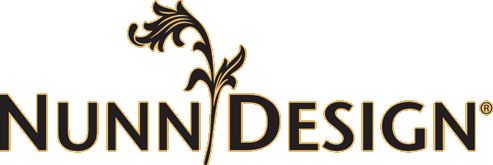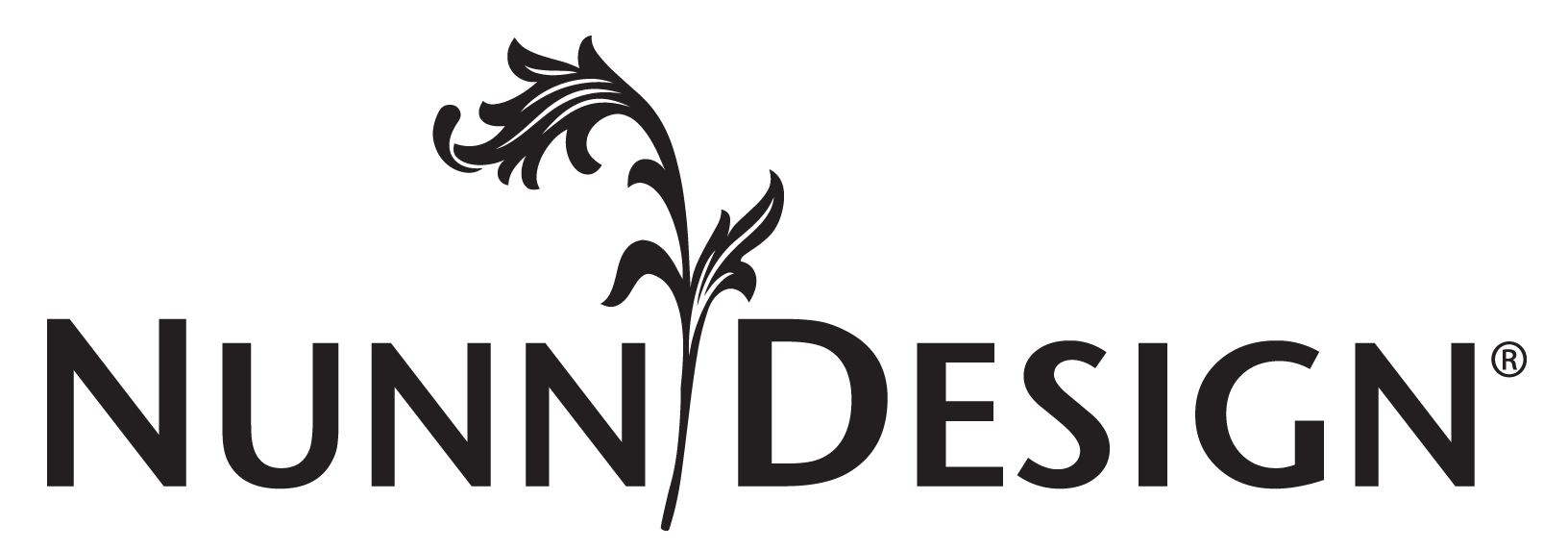Collage Sheets, Tutorials
How to Turn Your Images into Beautiful Resin Jewelry

How Do You Turn Pictures into Resin Jewelry?
The most important thing to do when making resin jewelry with pictures, images or collage sheets is to seal it!
If the image is not properly sealed the Resin can run the ink in the image and absorb into the paper, causing the image to darken.
- Thoroughly apply Nunn Design Glue into the base of the bezel.
- Place your image into the base of the bezel and burnish it down with a Q-Tip.
- Apply a coat of Nunn Design Glue over the top of the image and let dry for 24 hours. If the glue isn’t dry, it could cause bubbles in the resin.
Check out the tutorial below, showcasing this technique, that Stephanie Gard Buss created for us a while back. Learn how to use a collage sheet, PearlEx Mica Powders, Glitter Roxs and Nunn Design 2-Part Resin to create this sweet Underwater Mermaid Necklace.

Learn How!
Supplies:
Nunn Design Grande Pendant Circle
Bathing Beauties Collage Sheet
Nunn Design Glue
Nunn Design Resin Kit
Pearl Ex Powdered Pigments
Glitter Roxs
Necklace Supplies:
Conch Charm
Silver jump ring
Silver Filigree Bead Cap
Ring Toggle
Twig Toggle Bar
Coordinating glass pearls: several small for the length of the necklace, one 8 mm. for accent drop (here I used vintage).
Silver eye pins
Prepare Your Nunn Design Bezel:
Step 1: You might want to clean your bezels prior to gluing in your image. Using a cotton swab and some rubbing alcohol, clean the inside of your bezel. This helps ensure that the inside surface is oil and dirt free.
Select Your Image:
Step 2: Select an image from one of the Nunn Design Collage Sheets. This mermaid image is from the Bathing Beauties Collage Sheet.
Continue to trim and adjust the collage sheet image until it is flush to the base on all the sides. If the image is not flush to the base there is a potential for air to be trapped under the image and surface once you pour the resin.
Insert Image into Bezel:
Step 3: Once your bezel is clean, apply a thin coat of the Nunn Design Glue onto the base of the bezel. Place your collage image into the wet glue. Press firmly with a cotton swab in the center of the image.
In a circular motion burnish the image to the base of the bezel. If you applied a lot of glue onto the base of the bezel, you may have some excess coming up along the side edges of the image. Use a toothpick to clean up the excess glue.
Using a toothpick, make sure that the collage sheet is fully adhered along the sidewalls of the bezel. You should have a 90-degree angle on all sides. No paper should be creeping up the sidewalls.
IMPORTANT: Seal the Image!
Step 4: It is important to create a strong barrier between the image and the Nunn Design Resin. If you don’t seal the image, the moisture can run the ink in the image and absorb into the paper, causing the image to darken.

To seal the image, use a clean and dry brush. Paint on a coat of Nunn Design Glue and let dry overnight. If the glue isn’t dry, it could cause bubbles in the resin.
Colorize with Pearl Ex Powders:

Step 5: When the glue is dry, or mostly dry, on the image, take a small paintbrush and dip it into your pigment powder. Here I wanted to create depth around the image, so I used the darkest color in the crevice, then a richer blue around the image. This is totally freestyle—do what you wish. When you are happy with your image, it’s time for resin.

How To Mix Nunn Design 2-Part Resin:
Step 6: Read the resin instructions for safety concerns regarding the Nunn Design Resin. Put on your latex gloves and I would recommend safety glasses. I wear readers so I think that my eyes are protected. Make sure you have a pile of wet-wipes on the ready!
The Nunn Design Resin Kit contains:
A 4-ounce bottle of clear epoxy resin
A 4-ounce bottle of epoxy hardener
2 precision tips to screw onto the bottles
5 mixing cups
5 mixing sticks
Printed instructions on how to mix the resin

Step 7: To mix the resin you’ll want to have an exact one-to-one ratio. The one-to-one ratio has to be one tablespoon of Part A first and one tablespoon of Part B. This is a volume thing, not a weight thing. You have to mix the full mixing cup of resin to have the resin properly activate. I thought this was an excuse to get me to use more resin, but trust me, it isn’t! It is important to pour Part A first into the cup and then Part B. It is a chemical thing about part A being heavier or something.
Place one of the mixing cups included in the Nunn Design Resin Kit onto your table. I suggest getting your eyes level with the resin so you can see the lines on the measuring cup. Remove the lid to Part A of your resin kit and slowly pour the resin into the mixing cup up to the 1 Tablespoon mark. I suggest that you go slow until you start to gain more confidence. When you start to get near the 1 Tablespoon line, tilt the Part A bottle down, slowing the flow of the resin. Slowly drizzle the resin into the cup until you have hit the 1 Tablespoon mark EXACTLY! To end the flow of the resin, twist the bottle. Use a wet-wipe to fully clean up resin from the edge of the bottle. Make sure to put the Part A lid back onto the resin bottle.
I fold my wet-wipe over to make sure I don’t contaminate Part B when I clean up the edge of that resin after I pour it. I am also making sure that I don’t get any of the resin onto my hands.
Following all the same steps used for Part A, pour Part B into the mixing cup until it is EXACTLY at the 2 Tablespoon mark. Clean up the edge of the resin bottle and securely twist the Part B cap back onto the resin.

Step 8. Set your timer for 2 minutes. Using the stir stick from your Nunn Design Resin Kit, slowly and carefully stir your resin scraping the bottom of the cup and the sidewalls as you stir. Go slowly because it is easy for the cup to overflow. I hold the cup down at the base and use my fingers to help rotate the cup around. Stop from time to time and scrape the resin from the sides of the stir stick and continue to stir for the full 2 minutes. If your resin is still cloudy after your timer has gone off, continue to mix until clear.

After mixing is complete and your resin is clear, scrape both sides of your stir stick on the edge of your resin filled cup.
Another habit that I have developed is being aware of where I rest my stir sticks. To avoid getting resin all over my work surface, I like to rest the resin stir sticks in one of the mixing cups or onto a small Ziploc. I can easily peel the resin off of the Ziploc and reuse it. I can also reuse my stir stick once the resin has fully cured. I do know people who wipe out and reuse their mixing cups, but I haven’t done that so I cannot recommend it.
Apply Resin & Glitter Roxs into Bezel:
Step 9: Use the stir stick to slowly drizzle resin into the base of the bezel, over the mermaid image, until the bezel is partially full. Use a toothpick to go in along the edges of the image to agitate it slightly. If there are bubbles to be had, they would be lurking along the edges of the image. If bubbles do rise to the surface, you can breathe on them gently, causing the air to expand and pop.

Step 10: Allow the resin to set for about 30 minutes, then carefully sprinkle glass glitter where you want it, and allow to finish curing. If you put the glitter in while the resin is still very liquid, it will want to draw itself together into a clump.
Mix & Apply Nunn Design Resin Again:
Step 11: After leaving it to cure overnight, mix another small batch of resin and finish filling bezel so it domes nicely. If you don’t encase the glitter between two layers of resin, the edges of the glitter will poke out of the resin and be scratchy. Allow to cure 24 hours before moving onto assembling your necklace.

Assemble into Necklace:
Step 12:
To assemble the necklace, use eye pins, link glass pearls together until they are the length you want for your necklace. Attach toggle clasp at each end. String one 8 mm pearl onto a headpin, add bead cap, and finish with a loop on top. String a small pearl onto a headpin and finish with a loop on top. Attach a small jumpring to the conch shell. Slip all 3 charms onto a larger jump ring. This will drop from the bottom of your bezel pendant. Finish your necklace by attaching the pendant to the bead chain, and attach the charms to the bottom loop of the bezel with a jump ring.


Design by Stephanie Gard Buss
Stephanie makes her jewelry in a studio near the St. Croix river in Stillwater, Minnesota, where she also sells vintage jewelry components she’s scavenged from estate sales and old warehouses.
Visit her website: www.stephaniegardbuss.com/
Find Stephanie on facebook: facebook.com/maxandlucie
Shop Nunn Design Wholesale
Nunn Design has been supplying jewelry artists with findings for over 20 years. Shop wholesale jewelry findings for creative jewelry makers.
Shop Nunn Design!How to Purchase Wholesale?
If you are interested in becoming one of the many designers who trust their jewelry to Nunn Design Findings, please join us by registering to become one of our wholesale customers!
Please visit our Where to Buy Page for a listing of online stores that sell Nunn Design Findings retail.
If you enjoyed reading this post, please subscribe to our blog. Here are 10 Reasons Why to Subscribe and a place to do so!








Can we use images (copyright free) we print on our own computer? What weight of paper should we use? Also, do you still recommend Lazertranz for water tranfer? I saw a few different ones on Amazon.
These blogs and tutorials ALWAYS get my creative juices flowin’
Yes, you can.
We use a 100lb Text for printing with a laser printer. Inkjet printers could bleed.
I do recommend LazerTran for the transfer sheet stock. I haven’t worked with a lot of other brands, so report back on if it works for you.
I’m glad you enjoy the blog!